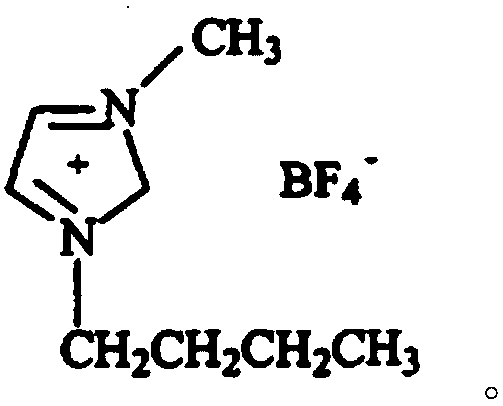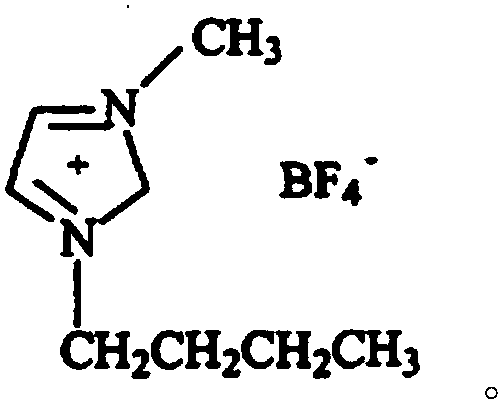Friction material and locomotive brake shoe produced from same
A friction material and locomotive technology, applied in friction linings, mechanical equipment, other chemical processes, etc., can solve the problems of low friction coefficient, poor impact resistance and instability of brake shoes at high temperature, and improve high temperature friction stability. sexual effect
- Summary
- Abstract
- Description
- Claims
- Application Information
AI Technical Summary
Problems solved by technology
Method used
Image
Examples
Embodiment 1
[0026] The friction material described in this embodiment includes the following raw materials in parts by weight:
[0027] 20kg of phenolic resin, 40kg of steel wool fiber, 10kg of glass fiber, 15kg of mineral fiber, 3kg of high-density polyethylene, 8kg of low-density polyethylene, 2kg of medical stone, 3kg of bentonite, 1kg of sulphoaluminate cement, 5kg of cellulose ether, silicon Crystal powder 2kg, fly ash floating beads 3kg.
[0028] The locomotive brake shoe described in this embodiment is made of the above-mentioned friction material, and the preparation method of the locomotive brake shoe includes the following steps:
[0029] (1) Get the selected amount of each raw material and mix to obtain the mixture;
[0030] (2) Place the mixture in a mold, and carry out conventional pressing at 5MPa and 120°C for 10s to obtain a blank;
[0031] (3) Heat and solidify the blank at 200° C. for 24 hours to obtain the desired brake shoe for a locomotive.
Embodiment 2
[0033] The friction material described in this embodiment includes the following raw materials in parts by weight:
[0034] 30kg of phenolic resin, 30kg of steel wool fiber, 20kg of glass fiber, 8kg of mineral fiber, 8kg of high-density polyethylene, 3kg of low-density polyethylene, 6kg of medical stone, 1kg of bentonite, 3kg of cement, 3kg of cellulose ether, 4kg of silicon crystal powder, Fly ash floating beads 1kg.
[0035] The locomotive brake shoe described in this embodiment is made of the above-mentioned friction material, and the preparation method of the locomotive brake shoe includes the following steps:
[0036] (1) Get the selected amount of each raw material and mix to obtain the mixture;
[0037] (2) Place the mixture in a mold, and carry out conventional pressing at 5MPa and 120°C for 10s to obtain a blank;
[0038] (3) Heat and solidify the blank at 200° C. for 24 hours to obtain the desired brake shoe for a locomotive.
Embodiment 3
[0040] The friction material described in this embodiment includes the following raw materials in parts by weight:
[0041] 25kg of phenolic resin, 35kg of steel wool fiber, 15kg of glass fiber, 12kg of mineral fiber, 5kg of high-density polyethylene, 5kg of low-density polyethylene, 4kg of medical stone, 2kg of bentonite, 2kg of cement, 4kg of cellulose ether, 3kg of silicon crystal powder, Fly ash floating beads 2kg.
[0042] The locomotive brake shoe described in this embodiment is made of the above-mentioned friction material, and the preparation method of the locomotive brake shoe includes the following steps:
[0043] (1) Get the selected amount of each raw material and mix to obtain the mixture;
[0044] (2) Place the mixture in a mold, and carry out conventional pressing at 5MPa and 120°C for 10s to obtain a blank;
[0045] (3) Heat and solidify the blank at 200° C. for 24 hours to obtain the desired brake shoe for a locomotive.
PUM
 Login to View More
Login to View More Abstract
Description
Claims
Application Information
 Login to View More
Login to View More - R&D
- Intellectual Property
- Life Sciences
- Materials
- Tech Scout
- Unparalleled Data Quality
- Higher Quality Content
- 60% Fewer Hallucinations
Browse by: Latest US Patents, China's latest patents, Technical Efficacy Thesaurus, Application Domain, Technology Topic, Popular Technical Reports.
© 2025 PatSnap. All rights reserved.Legal|Privacy policy|Modern Slavery Act Transparency Statement|Sitemap|About US| Contact US: help@patsnap.com



